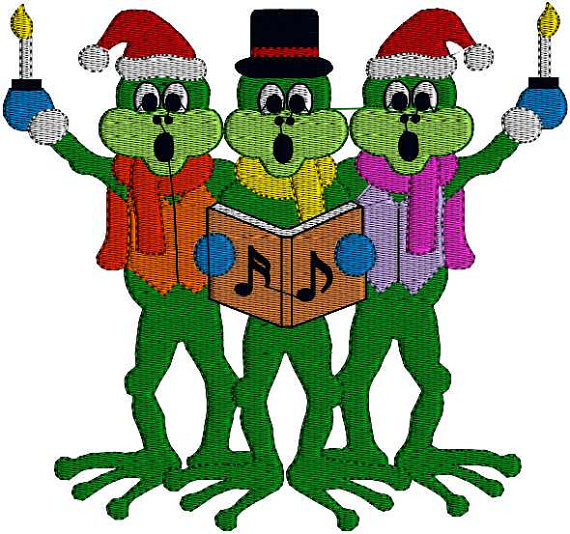My research shows that caroling goes back thousands of years in Europe. Back then, they were pagen songs sung during the Winter Soltice celebrations where people danced around a ring, or circle, of stones. The word carol orinally meant "to dance to something." Carol actually means dance, or a song of praise and joy. Carols used to be sung during each of the four seasons, but the tradition of singing them during the Yuletime, is really all that's survived through the ages.
Eventually, Christians took over the pagen celebration of the Winter Soltice for their Christmas and the pagen "carols" became Christian songs of faith. In the year 129, a Roman Bishop declared that a song called "Angel's Hymn" should be sung at the Cristmas service in Rome. Another famous Christmas song was written in 760, by Comas of Jerusalem, for the Greek Orthodox Church. Soon after, many European composers begain writing Christmas carols. They were not popular, however, because they were written and sung in Latin...a language the common people didn't understand. By the Midle Ages, (1200's) people had lost interest in celebrating Christmas altogether. I know! hard to believe...
But that all changed in 1223 when Saint Francis of Assisi started his nativity plays in Italy. The people sang songs, also called canticles, that told the story of the birth of Jesus during the plays. (Perhgaps an early version of the musical???) Often, the choruses were sung in Latin, but normally they were in the language of the audience, thus the people watching the play could understand and join in. Soon, these new carols spread to France, Spain, Germany and other European countries. The earliest of these carols was written in 1440 but, sadly, only a few fragments of the song remain today. The song was about Mary and Joseph and the different people they met in Bethlehem. Most of the carols from this time, and the Elizabethan period, are untrue stories...based loosely on the Christmas story. And they were sung in the home rather than in church. Traveling singers, or minstrals, started singing these songs and the words were changed for the local residents, wherever they were traveling One such song was, "I Saw Three Ships."
When Oliver Cromwell and the Puritans came to power in England in 1647, the practice of singing carols was forbidden. The practice of caroling remained, however, as people sang them at home, and always in secret. Carols remained unsung, at least in public, until the Victorian time when two men, William Sandys and Davis Gilbert began collecting lots of old Christmas songs from English villages.
Before carol singing in public became popilar, there were official carolers, called "Waits." These were bands of people led by local leaders, like councilmen, who had the only offical power in their villages to take money from the public. (Others were known as beggars.) They only sang on Christmas Eve, sometimes called watchnight or waitnight...thus the name Waits can to be. Around this same time, orchestras and choirs were springing up in the cities of England. The citizens wanted Christmas songs and carols became popular, once again. Many new carols, such as "Good King Wenceslas" were written during the Victorian period.
Carols and candlelight just seem to naturally go together. Even today, most candlelight vigil services on Christmas eve include the singing of beloved Christmas carols.
Next Friday, I'll take a look at the history of the Yule Log. Until then, I wish you all a safe and pleasant weekend. See y'all back here on Monday!

 RSS Feed
RSS Feed